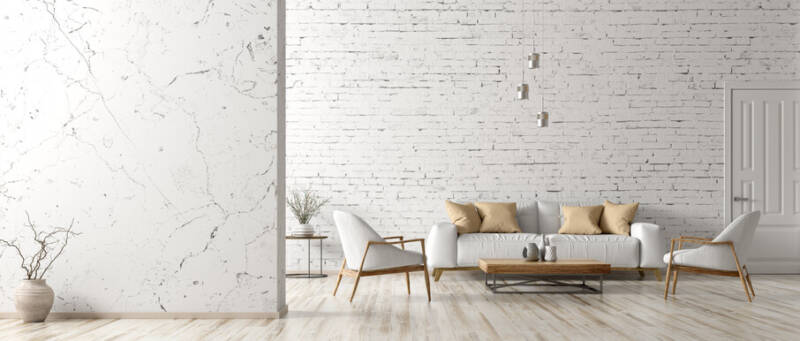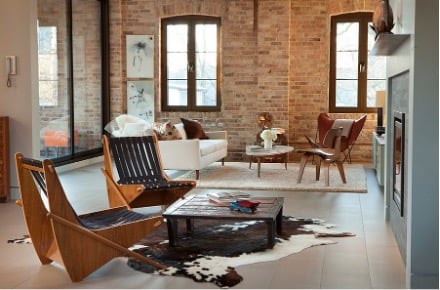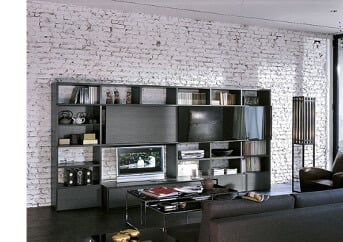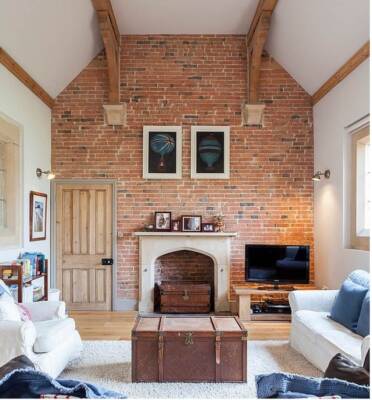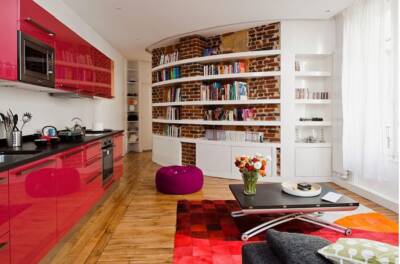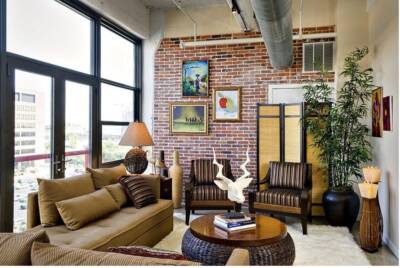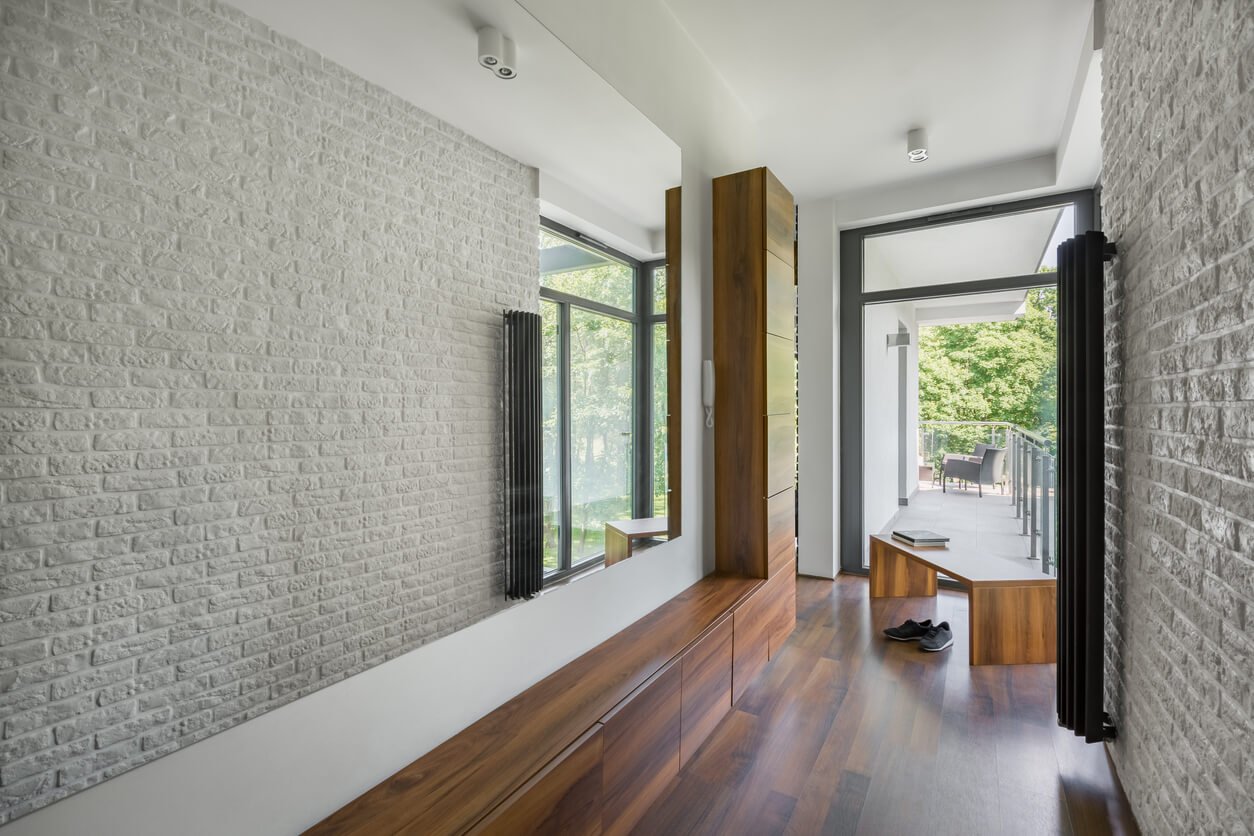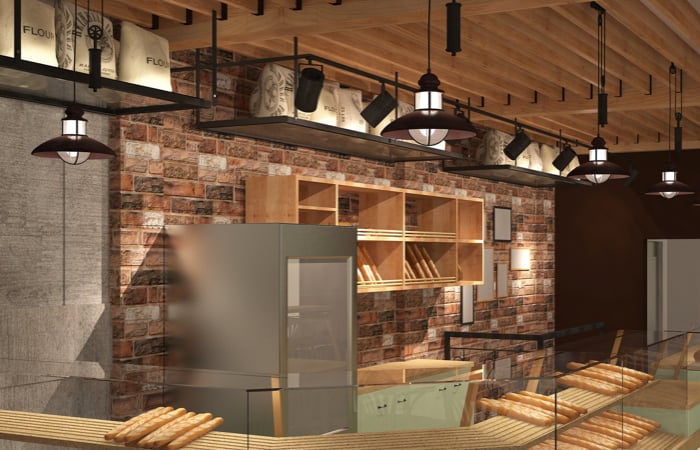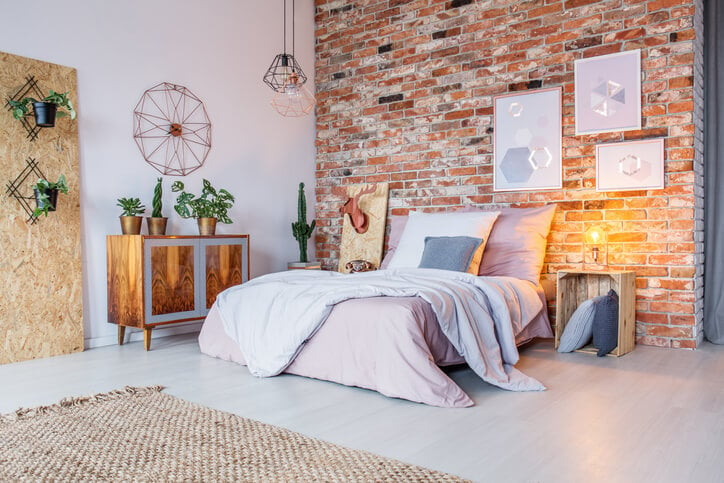
An aesthetic that’s literally centuries old, the brick wall interior has seen a revival of interest over the past several years. Where previously it was fashionable to cover up interior brick walls with plaster or sheetrock, more recent trends have been to expose and feature the innate warmth and texture of interior brick walls.
Interior brick can lend a feeling of rustic charm or city style to a room, imparting a sense of history or timelessness that can completely change the character or feel of a home or business. However, not every wall is likely to have existing brick construction, and as a building material, brick can be expensive and labor intensive.
So, if you are interested in having brick interior walls, you’ll have to consider installing something new – either a real brick veneer or faux brick panels. Let’s compare these two options and how they differ from solid brick walls.
Types of brick interior walls
Solid Brick
Solid brick homes are typically built using two layers, or wythes, of brick or a concrete block with a layer of brick for the exterior. While the interior wythe can be left exposed for a natural brick look, on occasion the materials used for the interior parts of the wall were of lesser quality – since they were intended to be covered up. You’re also at the mercy of the color and style of brick used, though you can consider applying a whitewash for a more uniform look.
If you’re fortunate enough to have a solid brick wall with good quality bricks for the interior – congratulations! Just be sure to take proper care of the material, as brick is porous and can be damaged by changes in moisture or through the use of harsh cleaners like trisodium phosphate or muriatic acid.
As brick is relatively expensive and requires skilled masonry to install, building a solid brick wall really isn’t a viable option unless you have a lot of time and money to spare. So, if you don’t already have a solid brick construction that you can expose, then you’ll need to consider installing a veneer.
Brick Veneer
It is possible to purchase thin brick tiles to cover an interior wall with a single wythe, creating a brick veneer. Bricks used for veneers are real bricks, just cut thinner in order to reduce the weight and size, allowing them to be attached to drywall or similar surfaces. They’re still as porous as full-sized bricks, so the same care should be taken for cleaning. As you’re applying the bricks yourself, you’ll have more choice over color and style, though you’re still at the mercy of what’s available for sale in your area.
Putting up a brick veneer isn’t quite as much work as a solid brick wall and so doesn’t need a skilled mason, but it still requires time and the skill to do it right. Don’t forget that you’ll need to add grout between the bricks to fill the spaces, which adds stability, improves acoustics, and enhances the overall aesthetic.
Faux Brick Wall Panel
A third option is to use a faux wall panel that replicates the look of brick. Faux brick panels can be colored to match a variety of brick styles, from deep, dark reds to faded and worn tans and browns. Like a brick veneer, a faux brick interior wall is just a single layer that can be placed over an existing wall.
The main difference between faux brick and brick is that faux panels are lighter, less expensive, and easier to install. Faux walls don’t need the application of mortar; they only require construction adhesive and screws to attach to the wall. There’s also no need to grout the bricks, as the surface is already in its “finished” state.
| Looks | Installation | Weight | Cleaning | |
| Solid Brick | Timeless, classic look. Colors and quality can vary | Cannot be built over existing walls; requires masonry | Heavy | Porous material requires sealant and careful cleaning |
| Brick Venner | Timeless, classic look. Choice of color and style depends on availability | Can cover existing walls; requires masonry | Moderate | Porous material requires sealant and careful cleaning |
| Faux Brick Wall Panel | Timeless, classic look, customized choices for color and style | Can cover existing walls; no masonry required | Light | Non-absorbent; used mild soap for cleaning |
Cost of brick interior walls
Solid Brick
If you have an existing brick wall, consider yourself fortunate, as building one can be considered expensive. For just the bricks alone you’ll pay between $6 and $15 per square foot. With installation by a mason, you’re likely spend between $14 and $30 per square foot.
Brick Veneer
If you’re thinking of installing a brick veneer it will be less expensive. On average, you can expect to pay $4to $10per square foot for the materials. Laying the bricks won’t require the work of a mason, so you can do it yourself without worrying about the cost of hiring outside help.
Faux Brick Wall Panel
Faux brick panels average around $8 to $12.50 per square feet, which is comparable in price to higher-quality bricks. Installation is the easiest, which means it’s definitely a DIY project that also won’t require the additional cost of grout or a skilled mason.
Brick interior wall ideas
There’s a lot of different designs that can be used with brick to add character to rooms. Here’s a few interior design ideas that highlight the versatility of brick.
Use in large, open rooms to add texture to the space.
Contrast a modern style design with single-colored brick
Accent one wall as a focal point to add a sense of warmth.
Place on a single area of interest to highlight that area.
Contrast brick against other materials and textures to bring character to a space.
How to install an interior faux brick wall
The process for preparing to install an interior faux brick wall is similar to a brick veneer, though that’s where the similarities end, as the veneer installation will require careful brick-by-brick placement and then a thorough sealing of grout. Overall, the process of installation for a faux wall is significantly easier and less time consuming than working with real brick.
Preparation – In addition to the faux wall panels, you’ll need to have:
- Saw
- Drill
- Construction adhesive
- Utility knife
- Drywall screws
- Step ladder
- Color-match textured caulk
Below is the process for installing an interior faux brick wall:
- Remove the baseboards and window base molding of the wall you’ll cover.
- Working right to left and bottom to top, place the panels onto the wall, fitting the interlocking parts together and layering the bottom groovers over the top tongue.
- Check the fit of the panels and make any precision cuts if needed. Use cut pieces to help fill in small areas or close gaps.
- Vacuum or wipe down the panel and wall to remove dust and debris, and then place adhesive onto the back of the panel.
- Once placed onto the wall, double-check placement, and then screw the panels into place to secure them.
- Fill in gaps between panels and over screw holes with color-matching textured caulk.
That’s it! If you’re interested in installing your own interior brick walls, review our many design options here or contact one of our specialists for assistance.

